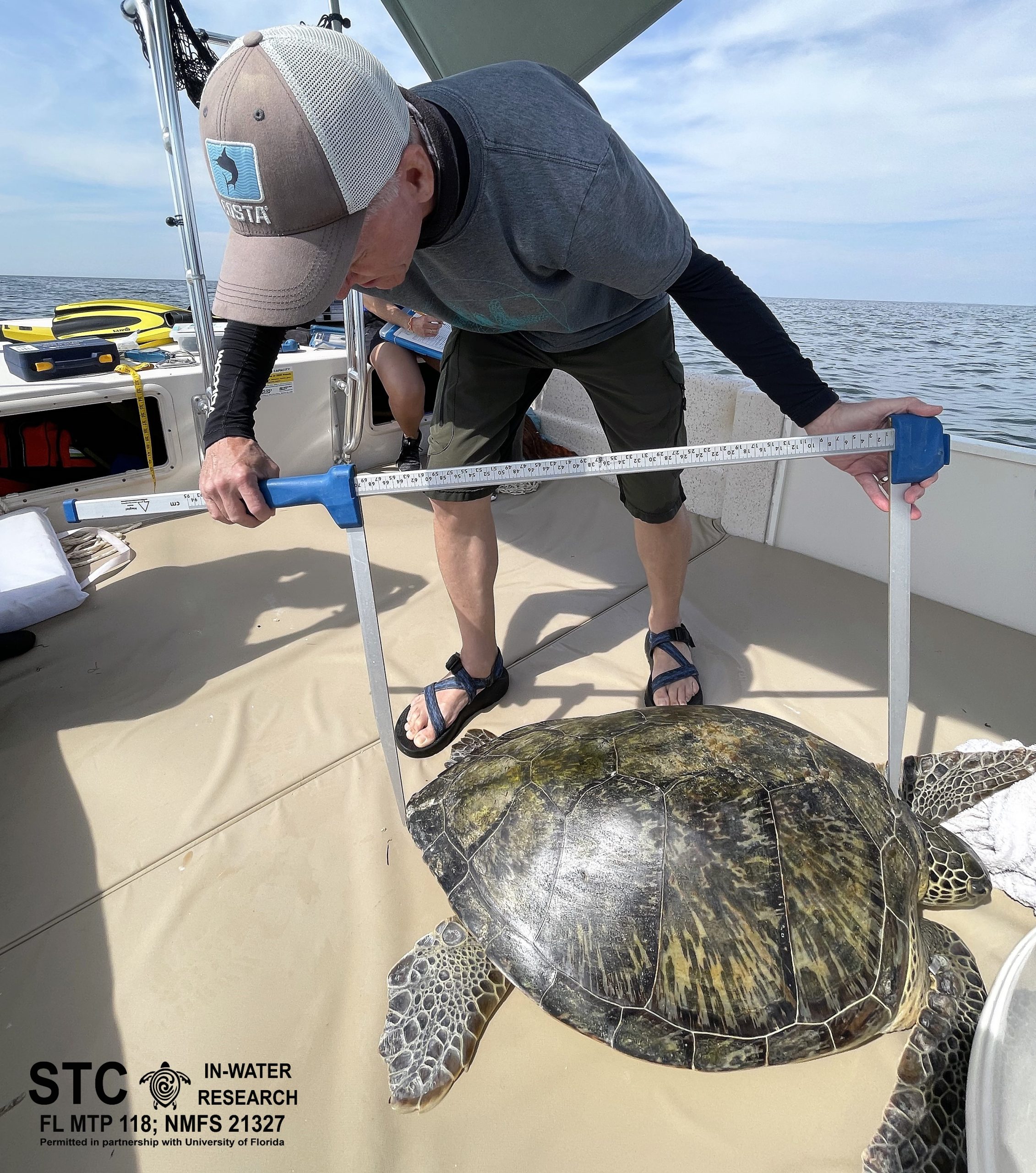 In 2018, Sea Turtle Conservancy began an in-water project to study the sea turtles in the northeastern Gulf of Mexico off the coast of Florida. Historical, anecdotal and published accounts suggest the Big Bend region of this coast is an important developmental foraging ground for sea turtles. The region contains the second largest seagrass estuary in the eastern Gulf of Mexico (about 3,000 km2). Estimating sea turtle population structure on foraging grounds is critical to measuring long-term trends, understanding the use of nearshore habitats and managing protected areas. The Florida Panhandle and Big Bend regions contain important developmental habitats for many marine species, yet they generally receive less research attention than other areas of Florida.
In 2018, Sea Turtle Conservancy began an in-water project to study the sea turtles in the northeastern Gulf of Mexico off the coast of Florida. Historical, anecdotal and published accounts suggest the Big Bend region of this coast is an important developmental foraging ground for sea turtles. The region contains the second largest seagrass estuary in the eastern Gulf of Mexico (about 3,000 km2). Estimating sea turtle population structure on foraging grounds is critical to measuring long-term trends, understanding the use of nearshore habitats and managing protected areas. The Florida Panhandle and Big Bend regions contain important developmental habitats for many marine species, yet they generally receive less research attention than other areas of Florida.
This research is a collaborative project between STC and Dr. Raymond Carthy at the USGS Florida Cooperative Fish and Wildlife Research Unit, University of Florida Department of Wildlife Ecology and Conservation. Both STC staff and UF students work long hours on the project. A key tool to this important work is a “state the art” research vessel named the ‘R/V Lavinia.” The vessel was donated to STC from Carolina Skiff Boats and STC paid for the new engine and custom tower with funding from generous donors, including Gimme Snacks.
The overall project objectives are to: 1) Determine spatial and temporal distribution of sea turtles using sighting surveys; 2) Capture sea turtles in high abundance sites to determine their size, health, genetic origin, sex and diet; 3) Use satellite, GPS, animal borne cameras, and acoustic telemetry to determine sea turtle behavior, and movements relative to each other and their surrounding habitat; and, 4) Determine impacts to sea turtles in the northeastern Gulf of Mexico from things such as harmful algal blooms, fisheries, marine debris and vessels.

Since 2019, we have captured 313 sea turtles, including 287 green turtles, 11 loggerheads, and 15 Kemp’s ridleys. Four of the research projects are focused on green turtles so that animal comprises most of our captures. It is also the most common turtle we have encountered in Florida’s Big Bend and Panhandle. Our research team is working on a variety of studies in collaboration with UF graduate students. We are finishing up three studies we began in 2019. These include an estimate of species abundance and distribution throughout Florida’s Big Bend, a comparison of juvenile green turtle demographics between three widely separated foraging grounds, and a study of green turtle overwintering movement and behavior. Last year, we began working with a UF graduate student studying green turtle fibropapillomatosis or FP, which is a debilitating tumor-bearing disease linked to poor water quality. We also began studying green turtle health and diet using point-of-care devices to analyze blood gases and blood chemistry values in the field. These measurements can be used as reference values for the medical management of sea turtles under veterinary care and as a comparison with sea turtles at other developmental foraging grounds. Lastly, we are studying the movements, diet and behavior of endangered Kemp’s ridley sea turtles in a warming Gulf of Mexico.
In addition to our research we are engaging more with the wonderful people who live in Florida’s Big Bend and Panhandle. The Big Bend or Nature Coast is one of the least developed coastlines in Florida. We are working on a new education campaign to connect with residents and visitors alike on the importance of this coast for sea turtles and what they can do to help them survive in the future. As part of this work, STC is set to release a handy new smart phone app that will allow people to report turtle sightings on the water and provide STC with useful information for locating new sea turtle foraging hot spots.